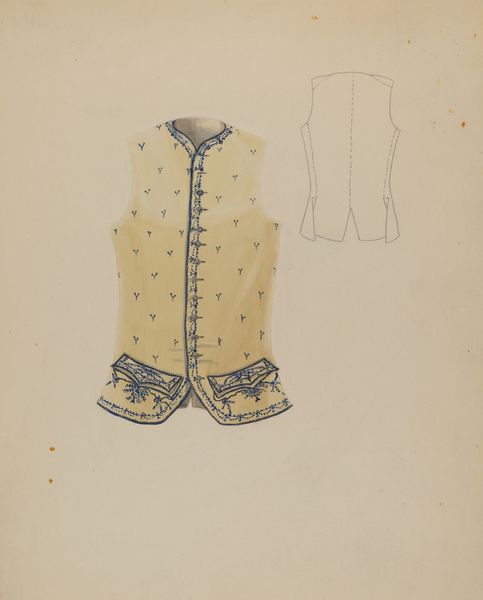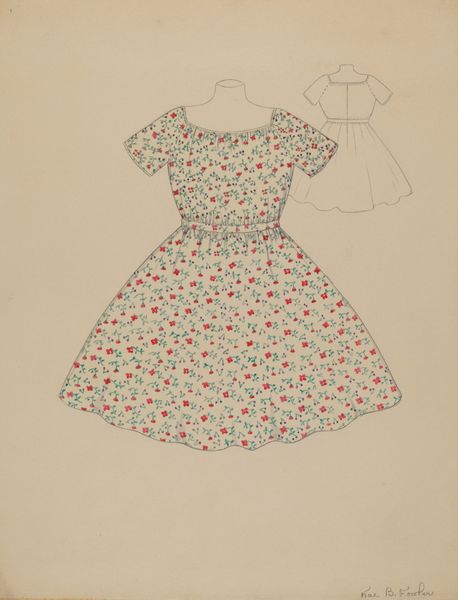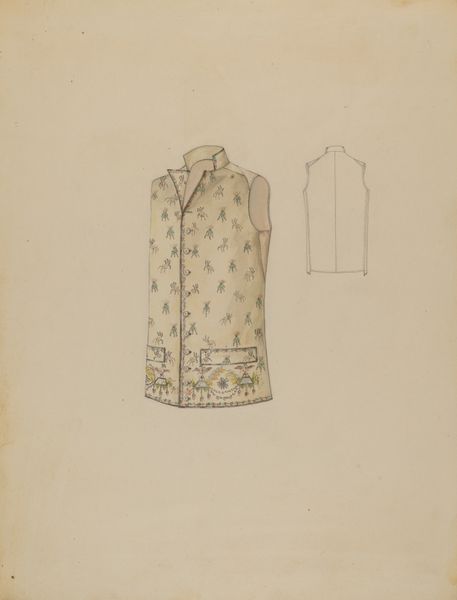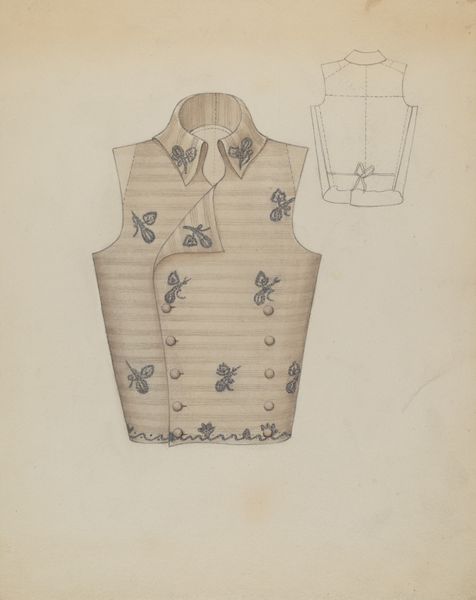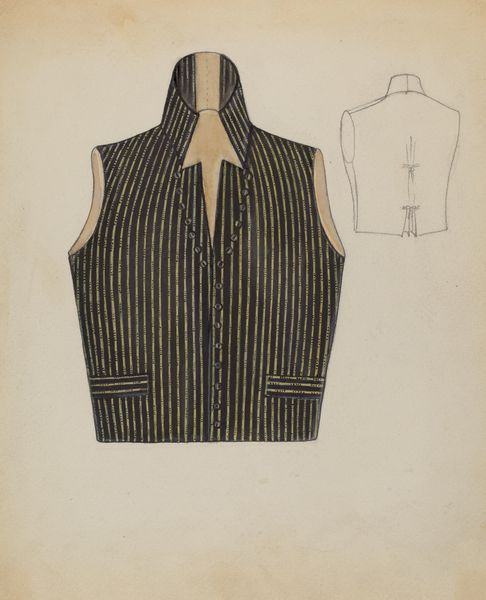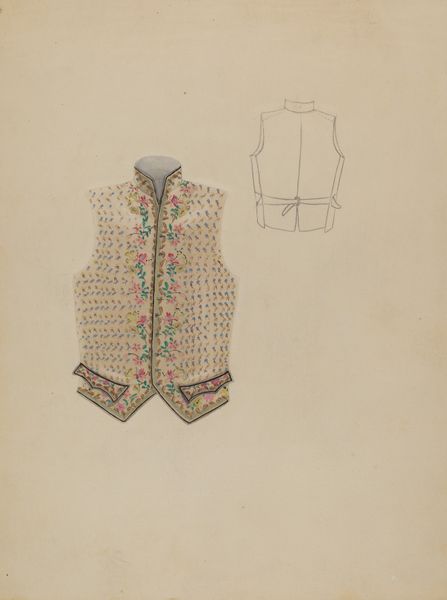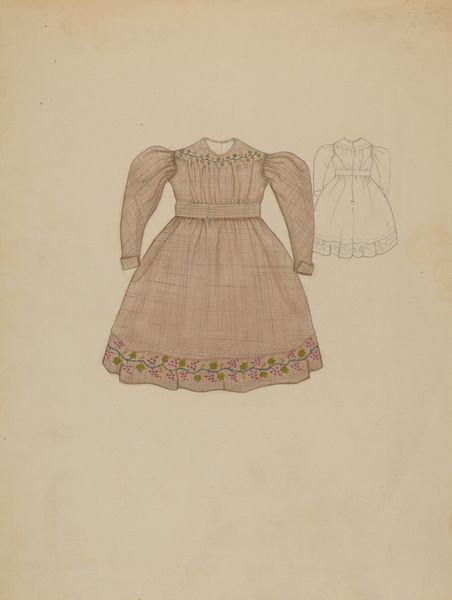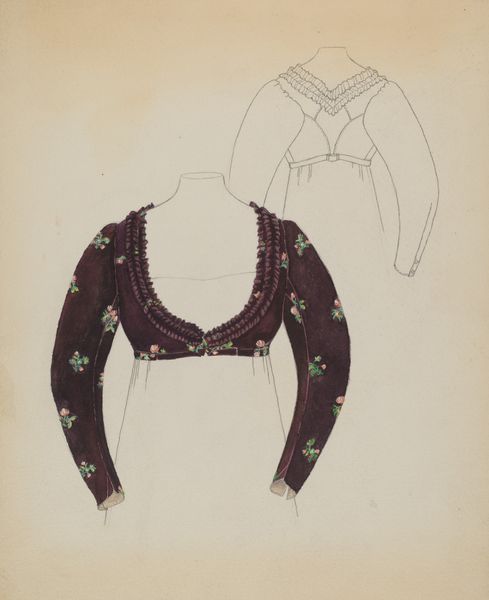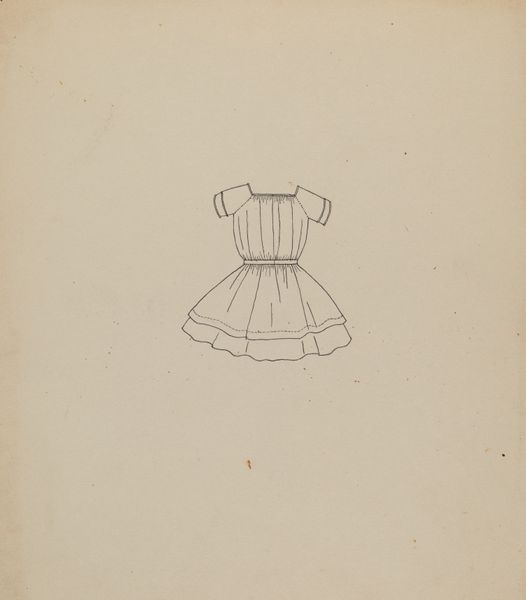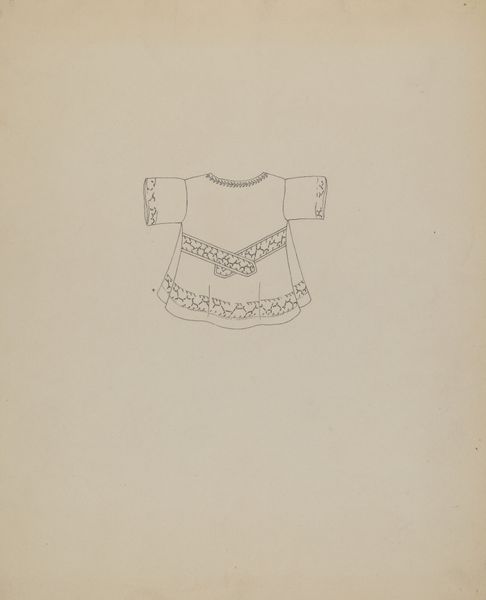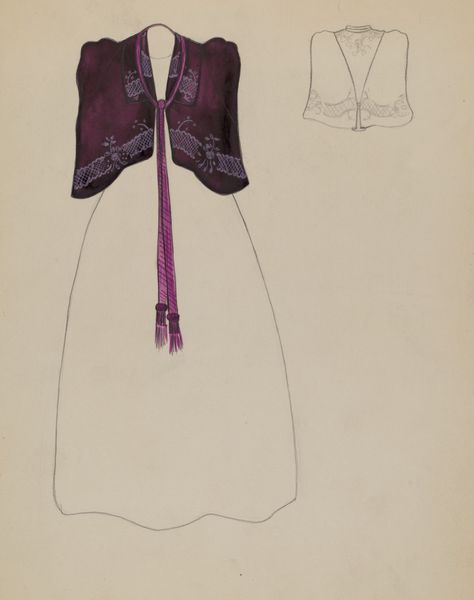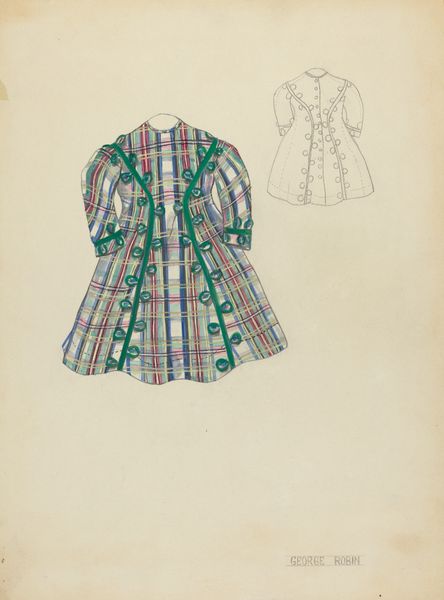
drawing
#
drawing
Copyright: National Gallery of Art: CC0 1.0
Curator: This delicate drawing, "Waistcoat," comes to us from around 1936, attributed to Dorothy Gernon. It appears to be a design study rendered in subtle colors. Editor: I’m immediately drawn to its gentleness—the muted palette of pinks and purples gives it an almost nostalgic air, doesn't it? There's a simplicity in the lines themselves that is quite striking. Curator: It speaks, perhaps, to the changing sartorial landscapes of the era, a quiet rebellion against the more formal attire that preceded it. Consider the waistcoat's role, often associated with the masculine suit, but here feminized by its pastel hues and floral embellishments. It raises questions about gender and class expression. Editor: That's a fascinating angle. I find the recurring motif compelling as well. Note how the eye travels in a very consistent fashion due to its formal grid of vertical bars containing the floral patterns. I suspect a conscious choice for harmony was paramount here, though at a low visual amplitude to not overwhelm the wearer. Curator: Absolutely, and the presence of what appears to be a more roughly sketched copy just above, adds another layer of analysis of intention versus outcome. We can investigate if the artist saw some failure in the larger rendition, some need for reevaluation in how a pattern lays across the human form. Editor: A beautiful specimen for understanding design! If one is trying to gauge texture based on shading and highlights alone, this is where the formal visual vocabulary of art can be so instructive. Curator: Agreed. Gernon offers a window into not only fashion, but the broader negotiations of identity through dress, pushing the boundaries within seemingly conventional forms. What it is to transgress even in fashion is worthy of our attention today. Editor: It’s the intimate scale that intrigues me. I now wonder what was the process and how does the drawing represent that in an intimate, even meditative, way. Curator: A testament to fashion's enduring ability to mirror and shape societal narratives, wouldn’t you agree? Editor: Yes, and the artist's ability to make pattern yield something more substantive in the expression of design, and even persona.
Comments
No comments
Be the first to comment and join the conversation on the ultimate creative platform.

